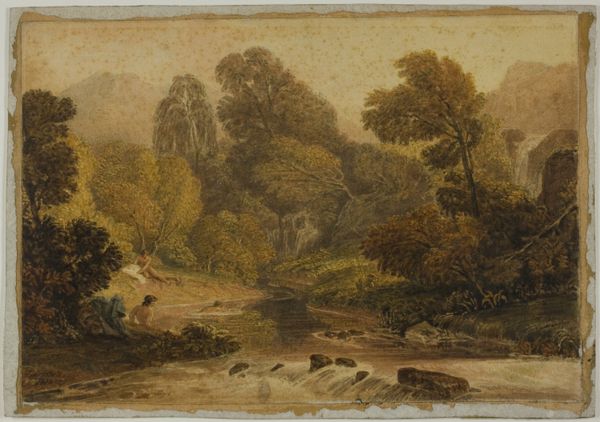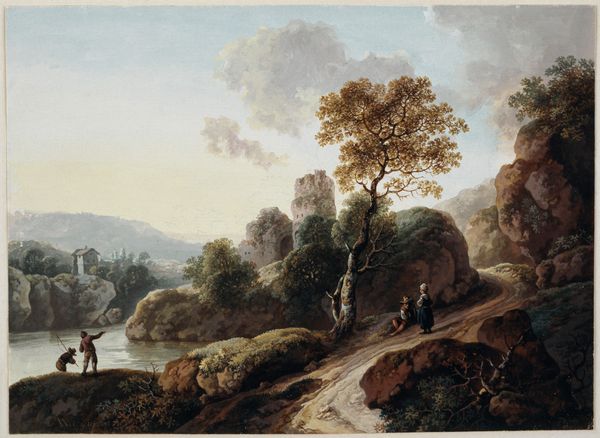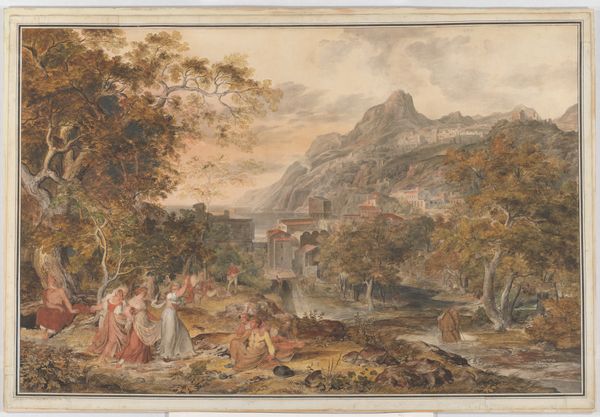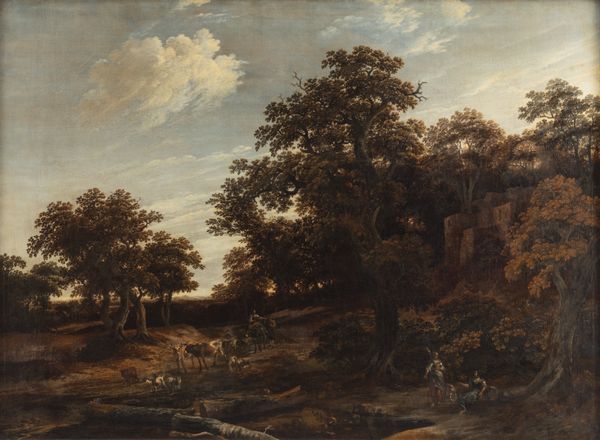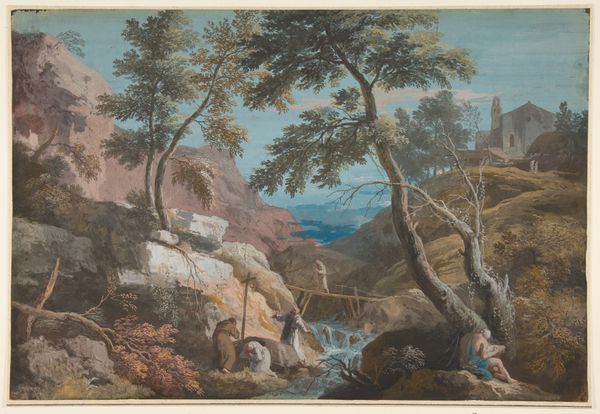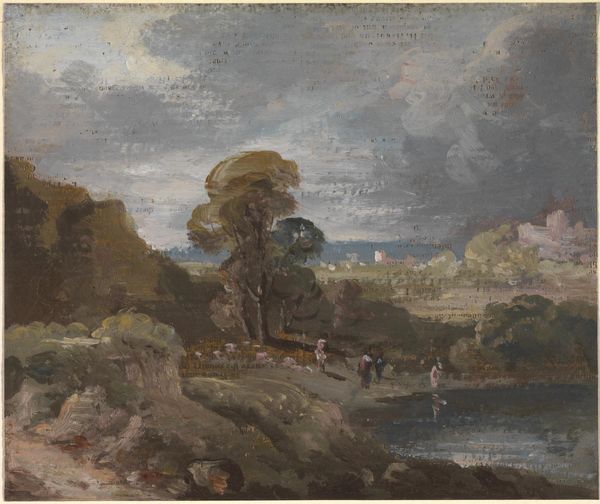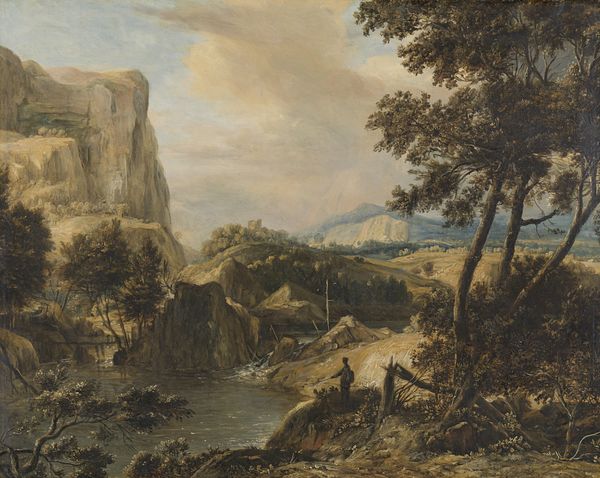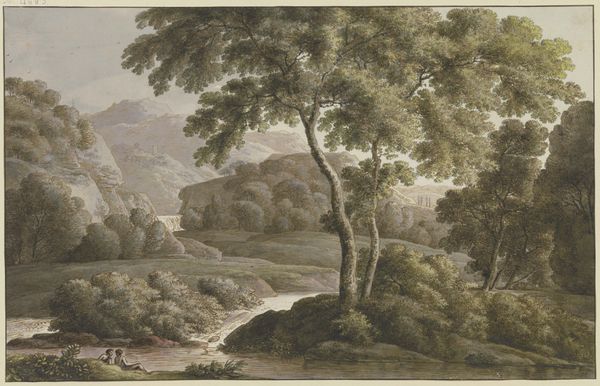
Mountain Landscape with Washerwomen and a Fisherman 1762 - 1765
0:00
0:00
drawing, painting, watercolor
#
drawing
#
painting
#
landscape
#
oil painting
#
watercolor
#
watercolour illustration
#
genre-painting
#
italian-renaissance
#
watercolor
#
rococo
Dimensions: overall: 41.7 × 63.8 cm (16 7/16 × 25 1/8 in.)
Copyright: National Gallery of Art: CC0 1.0
Editor: Zuccarelli’s "Mountain Landscape with Washerwomen and a Fisherman," painted around 1762, strikes me as incredibly idyllic. The scene feels both romantic and… staged. What draws your eye when you look at it? Curator: The way the artist organizes this landscape triggers interesting associations. Notice the women washing clothes – their figures evoke classical drapery, almost like nymphs at a sacred spring. Then, juxtapose them with the crumbling architecture in the background. Do you see a connection? Editor: Hmm, I hadn't really thought of the figures in terms of classical imagery. I see ruins. Are you suggesting that the architecture points to a bygone era? Curator: Precisely! It is as if Zuccarelli intentionally creates a dialogue between idealized nature, the eternal feminine, and the ruins that serve as reminders of civilization's fleeting nature. Consider the Rococo style which favours decoration. It’s a powerful symbolic combination, don’t you think? The birds in the sky are interesting, as well as a symbol of freedom, perhaps even a contrast to the labour of the Washerwomen? Editor: I never would have thought about all the symbolic imagery hidden in a landscape! I was too caught up in the pretty colours. Curator: The pretty colours are a hook, drawing you into a richer symbolic landscape. What will you notice the next time you see similar elements in another piece? Editor: Definitely the relationships between figures and ruins! It really opens up the way I understand landscape art and its meanings. Curator: Exactly, a landscape can show change and can be so much more than it seems at first glance.
Comments
No comments
Be the first to comment and join the conversation on the ultimate creative platform.
